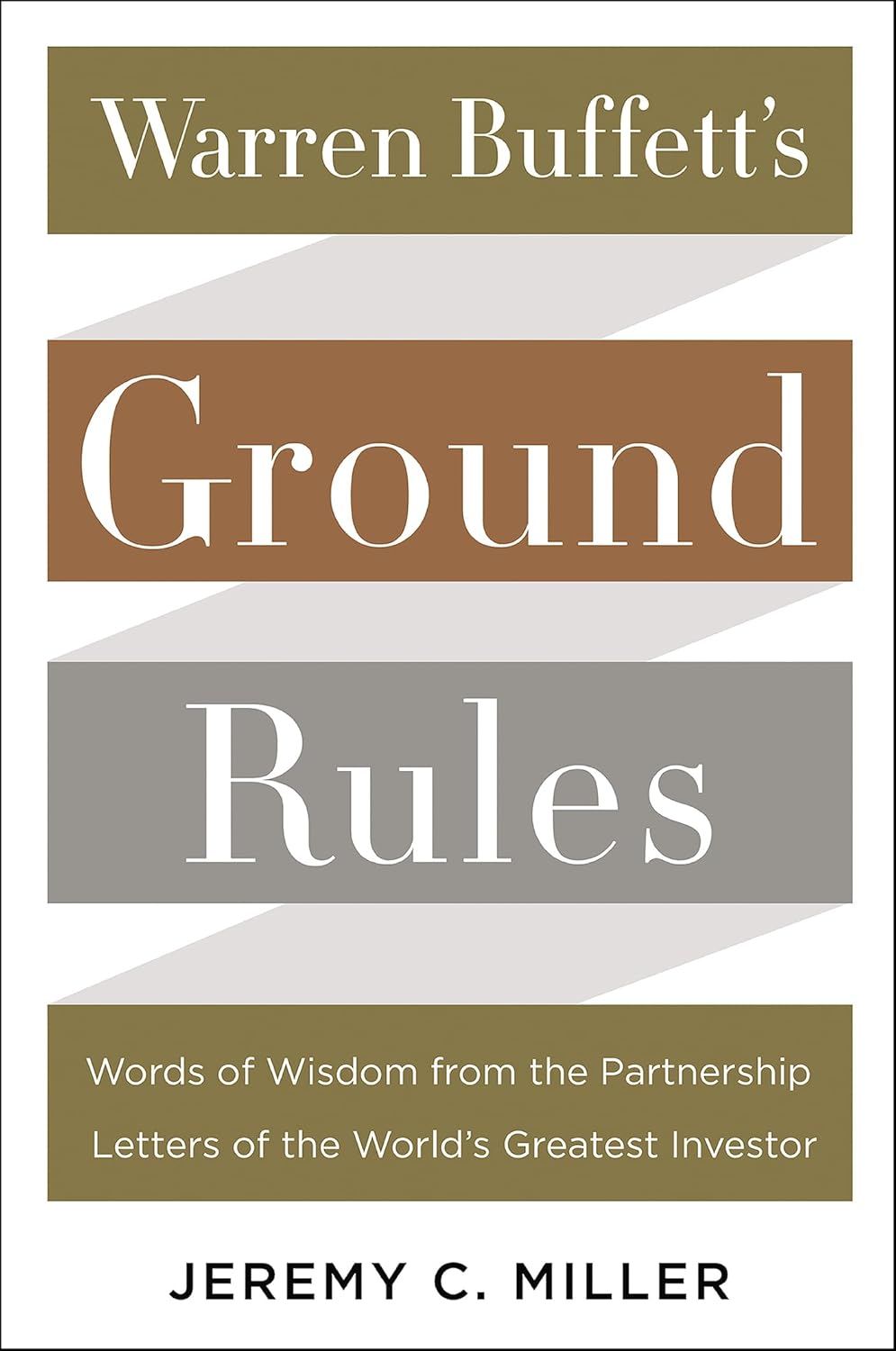This Week's Book: Warren Buffett’s Playbook Before Berkshire
I’m continuing to lean into my curiosity about the late 1960s through roughly 1982. This was a period of social and economic change. Interest rates were near 20%, and inflation was double digit.
Last week, I shared a biography I read about how Thomas Rowe Price Jr, founder of T. Rowe Price Group, navigated that period. This week, I dug into how Warren Buffett handled it by reading Warren Buffett’s Ground Rules. It was pre-Berkshire Hathaway, so Buffett was managing an investment partnership, Buffett Partnership Ltd. (BPL), and investing other people’s money (his LPs’).
This book isn’t specifically about the period in question. It’s more of a framework that details the principles that governed Buffett’s investments and how he applied them during the years he was actively investing via BPL, 1956 to 1969. The book is unique in that each chapter focuses on a Buffett principle, which is explained and then supported with excerpts from various BPL letters Buffett wrote. It does a great job of explaining his thinking and some of the investments BPL made. It devotes a section to the structure of BPL. It describes the three investing strategies Buffett used at BPL to generate outsize returns: generals (buying generally underpriced securities), workouts (profiting from merger arbitrage), and controls (taking majority ownership to influence a company’s direction).
This book also explains Buffett’s thinking regarding how to navigate the period I’m interested in. I learned that Buffett opted to sit on the sidelines and not invest. In May 1969, he announced that he was closing BPL and would return investors’ money. He went on to send a 17-page letter to his investors in early 1970 about the mechanics of tax-free municipal bonds, which he suggested they invest in. After BPL closed, the stock market experienced a very volatile period with significant declines in several years.
It was great to learn about the early Buffett days, his strategies, and why they worked. It was also eye-opening to see how he sidestepped the period I’m curious about. Anyone interested in BPL or Buffett’s early days should consider reading this book.




